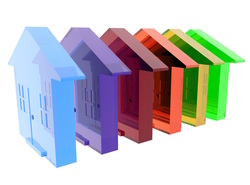
History tells us that very low interest rates can bring borrowers into the market, fueling demand and creating what is commonly referred to as a ‘Housing Bubble’.
This can be defined as “a rise in housing prices fuelled by demand, speculation and the belief that recent history is an infallible forecast of the future.” Housing bubbles usually start with an increase in demand, in the face of limited supply that takes a relatively long period of time to replenish and increase.
Continued Growth In Housing Market
Melbourne posted the highest level of growth at 5.4 per cent over the quarter with Sydney and Hobart also recording a strong result in the March quarter with values up 4.4 per cent and 4.7 per cent respectively.
According to RP Data research director Tim Lawless, half of all Australia's capital cities are now posting record high dwelling values, with Sydney's housing market showing the most substantial increase beyond its previous market high.
"Sydney dwelling values are now 15.8 per cent higher than their previous peak, substantially more than Melbourne where dwelling values are 4.7 percent higher than their previous peak. Perth and Canberra values have risen to be 2.9 and 1.2 per cent higher than their previous high point, respectively," Mr Lawless said.
Properties Selling Quicker In Current Market
There are presently less houses for sale than the same time last year and they are selling in a relatively short period of time. 12 months ago properties remained on the market for an average of 70 days, this has reduced to 51 days in the current housing market.
Recently listed stock is up 18.8% but the total number of listings is trending 3.8% lower than the same time last year. This suggests there are a number of new properties available however, the increase in demand is seeing properties sell at breakneck pace reducing overall stock levels.
Based on today's RP Data Rismark results, dwelling values have risen by a cumulative 15.8% since the growth cycle commenced in June 2012. Mr Lawless noted that a majority of this growth has occurred since June last year.
Looking at the performance of the housing market across broad price segments, the premium market remains as the best performer. After posting a more substantial correction, dwelling values across the most expensive quarter of the market were up 7.2% over the past six months while the lower priced quarter of the market saw values rise by a lower 4.9% over the past six months.
Rental Yields Down Overall
Rental yields continued to taper over the month of March 2014, with the typical capital city house providing a gross yield of just 3.8% and units showing a higher 4.6% gross yield.
According to Mr Lawless, gross rental yields have been falling since June 2013 when the pace of dwelling value growth picked up substantially. While capital city home values are up 12.5% since May last year, weekly rents have increased by just 1.8%.
With the growth in home values, senior research analyst with RP Data, Cameron Kusher advises “it is reasonable to expect a further deterioration of rental yields over the coming months, particularly in Sydney, Melbourne and to a lesser degree, Perth where value growth has been much stronger.”
(Source: rpdata.com)


 RSS Feed
RSS Feed
